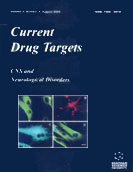Abstract
The metabotropic glutamate receptors are G-protein coupled receptors (GPCR) involved in the regulation of many synapses, including most glutamatergic fast excitatory synapses. Eight subtypes have been identified that can be classified into three groups. The molecular characterization of these receptors revealed proteins much more complex than any other GPCRs. They are composed of a Venus Flytrap (VFT) module where glutamate binds, connected to a heptahelical domain responsible for G-protein coupling. Recent data including the structure of the VFT module determined with and without glutamate, indicate that these receptors function as dimers. Moreover a number of intracellular proteins can regulate their targeting and transduction mechanism. Such structural features of mGlu receptors offer multiple possibilities for synthetic compounds to modulate their activity. In addition to agonists and competitive antagonists acting at the glutamate binding site, a number of noncompetitive antagonists with inverse agonist activity, and positive allosteric modulators have been discovered. These later compounds share specific properties that make them good candidates for therapeutic applications. First, their non-amino acid structure makes them pass more easily the blood brain barrier. Second, they are much more selective than any other compound identified so far, being the first subtype selective molecules. Third, for the negative modulators, their non competitive mechanism of action makes them relatively unaffected by high concentrations of glutamate that may be present in disease states (e.g. stroke, epilepsy, neuropathic pain, etc.). Fourth, like the benzodiazepines acting at the GABA A receptors, the positive modulators offer a new way to increase the activity of these receptors in vivo, with a low risk of inducing their desensitization. The present review article focuses on the specific structural features of these receptors and highlights the various possibilities these offer for drug development.
Keywords: metabotropic, gpcr, vft, gpcr subtype
 12
12

















